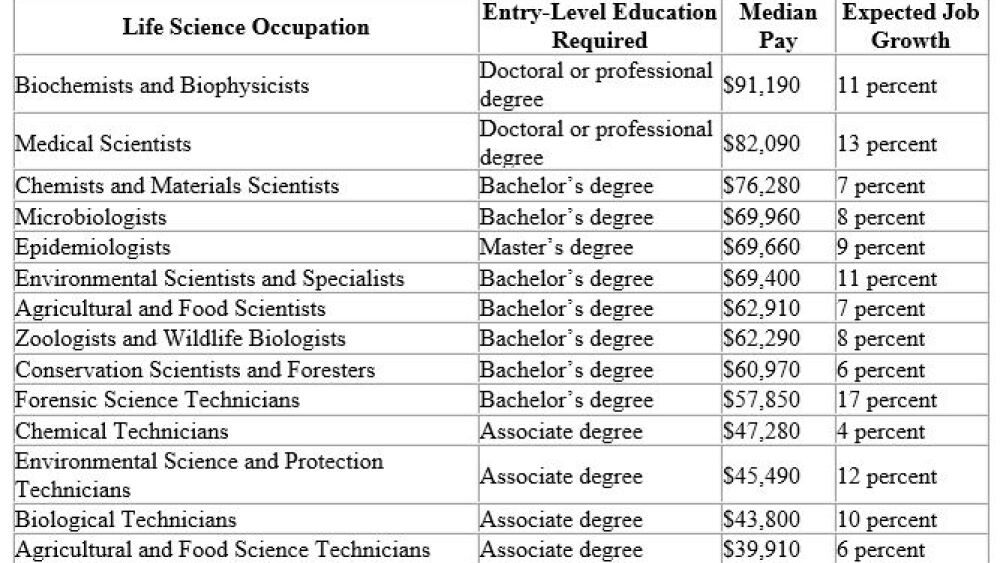If you’re considering a future in life science, there’s a good chance a lucrative salary isn’t the biggest draw. For many who choose science careers, the opportunity to satisfy an innate curiosity is more important than a stellar income.
If you’re considering a future in life science, there’s a good chance a lucrative salary isn’t the biggest draw. For many who choose science careers, the opportunity to satisfy an innate curiosity and contribute to the creation of medicine, technology or other advances for the betterment of society is more important than a stellar income. That said, decent wages are frequently part of the package, whether you’ve chosen to focus your skills on biology, chemistry or the environment.
Median Pay for Life Science Jobs
According to data from the Bureau of Labor Statistics (BLS) Occupational Outlook Handbook, employment in the life sciences is expected to increase 10 percent between 2016 and 2026, faster than the average for all U.S. occupations. While the median annual wage across life science occupations was $64,510 in May 2017, some positions – particularly those requiring post-graduate education – have the potential to earn more.
Additional Salary Factors
While employers may review national averages when determining the salary for a particular life science job, there are a number of other factors they are likely to consider before making an employment offer. Understanding these factors—and doing your own research in advance—will put you in a position to negotiate the best compensation possible.
- Industry – If a particular set of skills is in high demand but short supply within a certain industry, the position may pay more than the same job in another industry. For example, while BLS data shows the median annual salary for a biological technician is $43,800, biological techs working within the pharmaceutical industry earn a median salary of $48,300. Conversely, those working for the federal government earn $37,830. Understanding industry differences can help you choose a career path that will allow you to maximize your salary.
- Geographic Location – Location can drive salaries up or down depending on the local cost of living as well as competition for qualified jobseekers. For example, the top paying states for biological technicians according to the BLS are Massachusetts ($61,110 annual mean wage), Connecticut ($53,930) and California ($52,820). These states are also considered major life science hubs. Understanding cost of living and competition can help you negotiate a better salary when you think an employer is offering too little.
- Education and Experience – The more experience a jobseeker has, the higher the salary he or she can generally demand. If you earned your degree from a top program in the field, mention that when discussing pay. You’ll also want to make sure your potential employer understands exactly how your past work experience, volunteer opportunities, and continuing education courses apply to the job at hand.
- Flexibility – If you’re willing to relocate for the job or work a less desirable shift, you may have additional negotiating power. Hiring managers are sometimes willing to offer more if you’re helping them fill a tricky position.
- Benefits – ‘High-paying’ isn’t just about salary. It also includes benefits that enhance work-life balance and career development. Perks like tuition reimbursement, professional development opportunities, mentoring, on-site childcare, medical and dental insurance, and flex time can add a lot of value to a compensation package.






